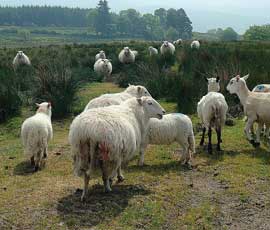Genomic technology helps improve sheep sector

Genomic technologies are being developed for the UK sheep sector that will help produce more efficient and productive breeding stock.
A £1.3m research programme led by Innovis and supported by the UK’s Technology Strategy Board (TSB) will help develop new genomic technologies that will enable animals to be selected for attributes such as maternal ability, health, carcass composition and eating quality. These are traits that cannot easily be assessed in the live animal.
The four-year project, which began last year, is recording more than five selected traits in about 6,300 animals. The information will be used to develop new Genomic Breeding Values (GBVs) to be used in conjunction with Estimated Breeding Values (EBVs) to enable improved selection accuracy of breeding animals.
Dewi Jones of Innovis believes the programme will result in improved performance, which will become apparent within the flocks after five years.
“The fragmented structure of the UK sheep sector, together with its low reproductive rate and long generation interval, means the potential for genetic improvement has been largely unexploited. That means progress to date has focused solely on easy-to-measure traits such as growth rates and carcass conformation,” he says.
“Recent developments in DNA testing technologies now allow very small changes in an animal’s DNA code to be efficiently identified in thousands of sites right across the genome. If the association of these tiny DNA changes with an animal’s performance or appearance can be established in a well-recorded population, the information can then be used to predict the breeding value of other animals.
“These predicted GBVs can then be used in conjunction with EBVs to improve the accuracy with which we identify the best animals to use in breeding programmes. GBVs are likely to be most useful for traits that are difficult or expensive to record in an animal selected for breeding and can only be measured in one sex or accurately later in an animal’s life,” he adds.
Read more about the use of genomics in the dairy sector
